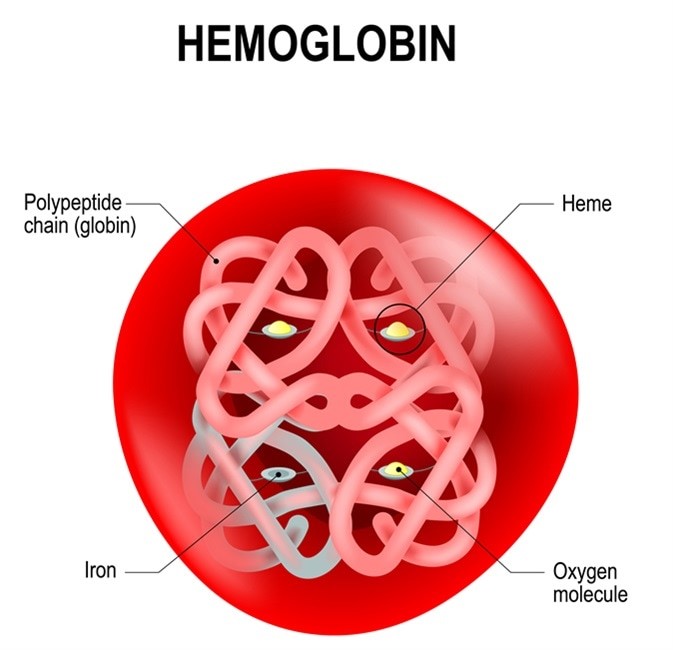An adult with arthritis has been receiving treatment with naproxen and now reports ongoing stomach pain, increasing weakness, and fatigue. Which laboratory test should the nurse monitor?
Creatinine
Serum calcium
Erythrocyte sedimentation rate
Hemoglobin
The Correct Answer is D
Choice A: Creatinine is not a relevant laboratory test for the nurse to monitor, as this reflects renal function and is not affected by naproxen or arthritis. This is a distractor choice.
Choice B: Serum calcium is not a pertinent laboratory test for the nurse to monitor, as this indicates bone metabolism and is not related to naproxen or arthritis. This is another distractor choice.
Choice C: Erythrocyte sedimentation rate is not an important laboratory test for the nurse to monitor, as this measures inflammation and is not influenced by naproxen or stomach pain. This is another distractor choice.
Choice D: Hemoglobin is an essential laboratory test for the nurse to monitor, as this shows blood oxygen-carrying capacity and can be reduced by naproxen-induced gastrointestinal bleeding, which can cause stomach pain, weakness, and fatigue. Therefore, this is the correct choice.

Nursing Test Bank
Naxlex Comprehensive Predictor Exams
Related Questions
Correct Answer is C
Explanation
Choice A: Monitoring indwelling urinary catheter and measure strict intake and output is not an action that the nurse should immediately take, as this is not relevant or urgent for a client who may have had a stroke. This is a distractor choice.
Choice B: Keeping the bed in the lowest position and initiating seizure and fall precautions is not an action that the nurse should immediately take, as this is a preventive measure that does not address the acute problem of impaired cerebral perfusion. This is another distractor choice.
Choice C: Starting two large bore IV catheters and reviewing inclusion criteria for IV fibrinolytic therapy is an action that the nurse should immediately take, as this can prepare the client for potential administration of tissue plasminogen activator (tPA., which can dissolve blood clots and restore blood flow to the brain if given within 4.5 hours of stroke onset. Therefore, this is the correct choice.
Choice D: Maintaining elevated positioning of the dependent joints on affected side is not an action that the nurse should immediately take, as this can worsen edema and impair circulation in the affected limbs. The recommended position is to keep them at or below heart level. This is another distractor choice.
Correct Answer is D
Explanation
Choice A: Mark an outline of the 'olive-shaped' mass in the right epigastric area. This is not a priority action, as it does not address the immediate needs of the infant. The 'olive-shaped' mass is a sign of pyloric stenosis, but it does not affect the infant's hydration or nutrition.
Choice B: Instruct parents regarding care of the incisional area. This is an important action, but not a priority before surgery. The parents need to know how to care for the incisional area after surgery, but this can be done later.
Choice C: Monitor amount of intake and infant's response to feedings. This is a relevant action, but not a priority before surgery. The infant with pyloric stenosis may have vomiting, dehydration, and electrolyte imbalance due to gastric outlet obstruction. Monitoring intake and output can help assess the severity of these problems, but it does not correct them.
Choice D: Initiate a continuous infusion of IV fluids per prescription. This is the priority action before surgery, as it can prevent or treat dehydration and electrolyte imbalance in the infant. IV fluids can also help maintain blood volume and perfusion during surgery.
Whether you are a student looking to ace your exams or a practicing nurse seeking to enhance your expertise , our nursing education contents will empower you with the confidence and competence to make a difference in the lives of patients and become a respected leader in the healthcare field.
Visit Naxlex, invest in your future and unlock endless possibilities with our unparalleled nursing education contents today
Report Wrong Answer on the Current Question
Do you disagree with the answer? If yes, what is your expected answer? Explain.
Kindly be descriptive with the issue you are facing.
